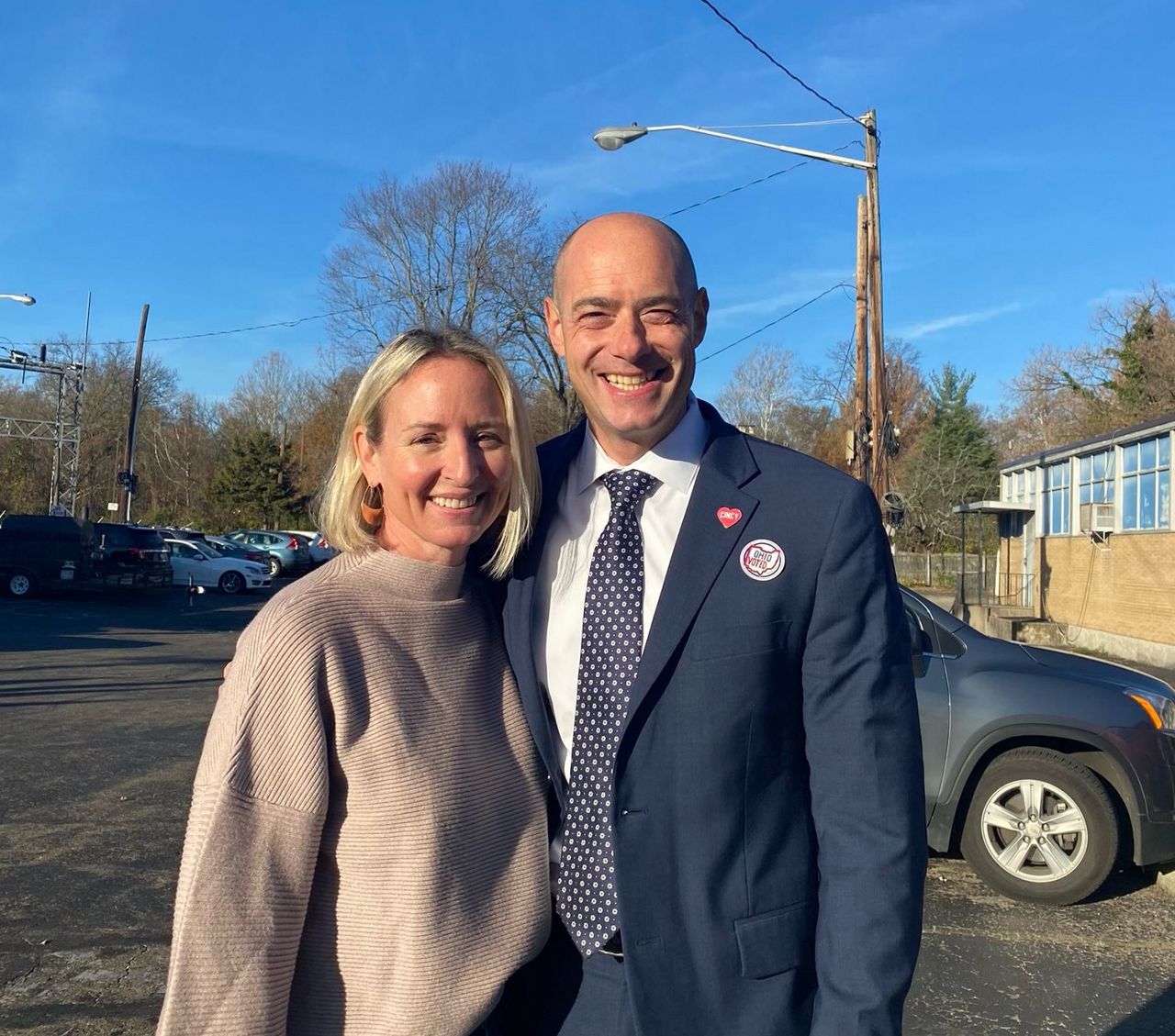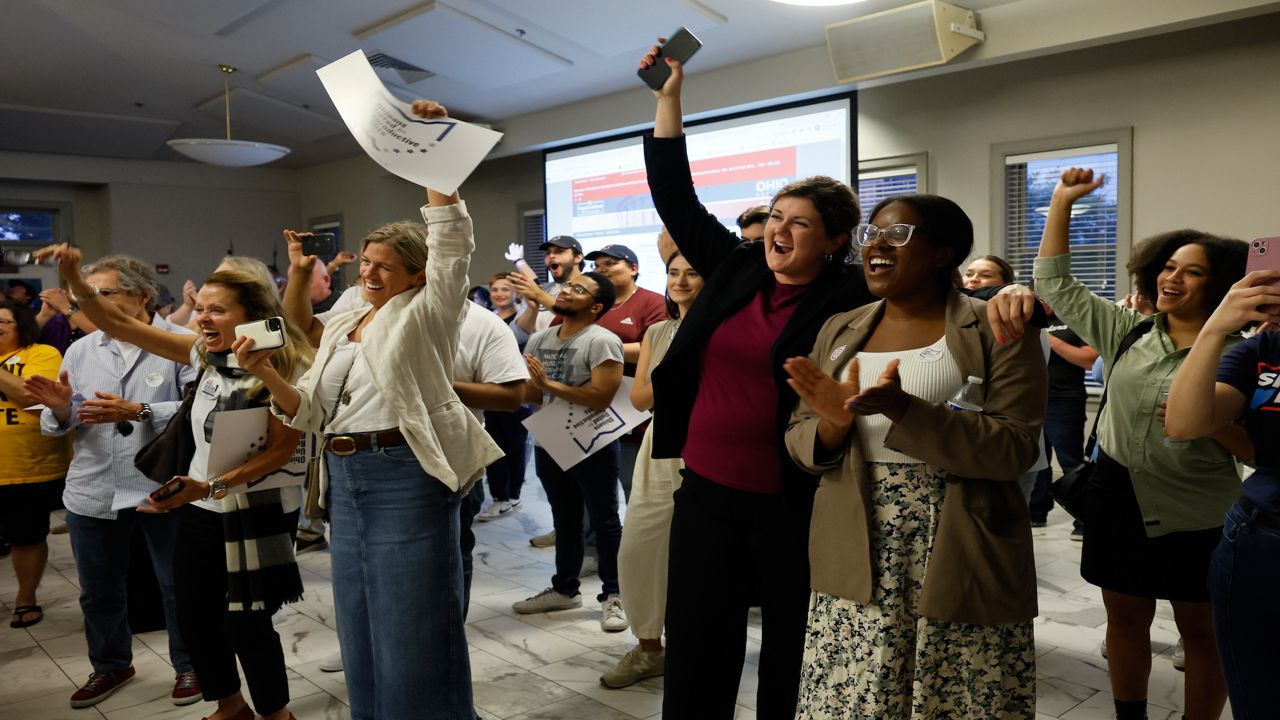CINCINNATI — For only the second time in the past 28 years, someone other than Steve Chabot will represent Ohio’s 1st District in the House of Representatives.
What You Need To Know
- Cincinnati City Council member Greg Landsman defeated longtime incumbent Steve Chabot in a hotly contested race in Ohio's 1st District
- Pundits believe changes to the district to counteract perceived gerrymandering played a role in the win
- Chabot had been in the House of Representatives every term, but one, since 1994
Democratic challenger Greg Landsman unseated Chabot — a longtime Republican congressperson from Westwood — to win election in the recently redrawn congressional district in southwest Ohio.
Votes were finalized late Tuesday night, reflecting Landsman's victory.
“When this started, I knew this was going to be a fight. I knew it was the right fight. I knew our democracy was at stake. I knew our rights were on the line. And despite not knowing how it would end, I knew all of you would show up — and you did, and I couldn't be more grateful,” said Landsman, who begins a two-year term in January. “This win sends a message and now the real work begins."
Landsman ran on a platform centered on making it easier to raise a family in greater Cincinnati and Ohio.

During his career, Landsman has served as a public school teacher, worked in education advocacy and served as director of Faith Based and Community Initiatives for former Ohio Gov. Ted Strickland (D).
Most recently, Landsman has served as a member of Cincinnati City Council. The Mount Washington resident began his second term in January.
“Landsman has been a really good leader while he’s been on City Council and it's about time we have someone with those skills representing us in Washington,” said Jim Schenk, 79, of East Price Hill. “He’s done some really great things for the city so far, I think, especially as it relates to the environment and the budget. I think he’s going to continue to do great things for our city.”
Shenk made the trek downtown late Tuesday night to celebrate Landsman on his victory. He was surrounded by a few hundred campaign staffers and supporters who rallied around him at just before 11:30 p.m. when he announced Chabot had called to congratulate him on his victory.
“This was a very, very competitive district – there aren’t that many competitive districts in the country,” Landsman said of the hard-fought victory. “But his group of voters said, ‘When it comes to the chaos and the extremism, we’re done. When it comes to election denial, we’re done. When it comes to taking away our reproductive freedom, we are done.'”
Same district, new era
Chabot has been a mainstay in Washington, D.C., since first being elected to the House of Representatives in 1994. He’d won the 1st District every 13 of the previous 14 times he’d run, the lone exception being a loss in 2008 to State Representative Steve Driehaus, 52% to 48%.
Chabot and the GOP saw their nearly three-decade stranglehold on the 1st District loosen in recent years as the makeup of the voting base in Cincinnati’s urban core changed when more people moved into the city.
In 2018, Chabot defeated the then up-and-coming Aftab Pureval — currently the mayor of Cincinnati — 51.3% to 46.9%.
Two years later, Chabot had a similarly closely contested race, defeating challenger Kate Schroder (D), 51.8% to 44.6%. Libertarian candidate Kevin Kahn won 3.6% of the vote.
But the major change happened in 2018 when Ohio voters approved sweeping redistricting reforms with the goal of reducing gerrymandering and creating more competitive elections in congressional races. Gerrymandering is the manipulation of political boundaries to favor one party.
David Niven is a professor of political science at the University of Cincinnati whose research focuses on various aspects of American politics, including election campaigns and gerrymandering. He described the reshaping of the 1st District as one of the “defining achievements” of redistricting reform in Ohio.
The redistricting process itself was “pretty close to a disaster,” Niven said, because of what he called a “hyper-partisan, contentious and unconstitutional” process. But one requirement of the new reforms was that cities couldn’t be split into multiple congressional districts.
The 1st District that Chabot represented on and off for nearly three decades was a “zigzagging line” through the region that included parts of Cincinnati, much of western Hamilton County and Warren County, Niven said.
While not as “blue” or Democrat-leaning as Columbus or Cleveland, Niven said, Cincinnati was far less conservative than the county suburbs and Warren County, Niven explained.
The new rules made the district more competitive this election cycle, Niven said. In his concession Tuesday night, Chabot echoed those sentiments, saying he believed the newly aligned OH-1 played a role in his defeat.
“The old district produced a just-safe-enough Republican seat Chabot could win comfortably because you cut Cincinnati in two pieces,” Niven added. “Now, there’s an opportunity for the people of Cincinnati to actually have a member of Congress and to have that member reflect their values.”

Lower than expected voter turnout
One surprise Tuesday night was voter turnout. Many pundits were calling for huge voter turnout, especially among young voters. Some called it the potential of a “Generation Z wave.”
“There’s no shortage of emergencies on this ballot,” he said. “In effect, there are unique issue moments, for instance, a voter who’s under 50 years old, first time where abortion rights are on the ballot.”
But that didn’t transpire. Early estimates show that voting totals in Hamilton County dropped from 57.52% in 2018 to 49.6% this year. In Warren County, numbers dripped from 63.02% to about 57.7%.
“The energy today has been incredible,” said Ethan Nichols, 20, a student at Xavier University who worked on the Landsman campaign trail on Election Day. He visited polling locations in Madeira, Mount Healthy, Madisonville and others. “We wanted to make sure (potential voters were) aware of the stakes today – and we think we got our point across.”
While Niven expected Landsman to “eke out a win,” he expected the Democratic party to struggle across the country. He explained it’s a common occurrence for a party to struggle in midterm elections after winning a presidential election.
Niven went into Tuesday expecting Democrats to lose some ground. In Ohio, incumbent Gov. Mike DeWine handily defeated Democrat Nan Whaley, and first-time candidate JD Vance (R) defeated Tim Ryan in a race for a seat for the U.S. Senate.
“Parties have found it somewhat easy to run against the president on a vague sort of opposition, rather than running on sort of tangible accomplishments,” Niven said.
Niven feels the Landsman win could be a highlight for the Democratic Party, not just locally or regionally, but across the country.
“This is taking a seat that (the Democrats) didn’t have and doing it in the face of what’s likely to be a national tide that’s running against them,” he said.
During his speech to supporters Tuesday night, Landsman stressed that Election Day was just the beginning.
"Our fight doesn’t end with this one election," Landsman said. "The fight to protect our country and our rights, to build an economy that works for everyone, and to end the chaos and extremism that so many of us are tired of goes on. It will not be easy. But neither was this race and here we are now."









